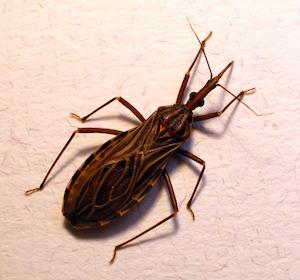Our public health system has a very bad habit of fighting the last war. This has resulted in a real-life version of American Horror Story. Like the plagues of Egypt, one exotic disease after another keeps washing ashore, catching scientists and public health officials flat-footed.
First, it was Ebola. For decades, Ebola was a bizarre and terrifying disease associated with remote villages in Africa and a movie starring Dustin Hoffman. Out of sight, out of mind. Then, things "got real" when it killed a Liberian man in Texas in October 2014. Only after that public scare did Ebola research and prevention kick into high gear. Likewise, Zika was once an obscure virus, until it gave health officials a rude awakening in Brazil and subsequently the United States. Only then did Zika receive the attention it had probably deserved all along.
There is a lesson to be learned here: It is best to prepare for exotic diseases before they become uninvited guests. Will policymakers apply that lesson to another potential troublemaker, Chagas disease?
In a paper published in Trends in Molecular Medicine, Prof. Rick Tarleton of the University of Georgia warns against the danger posed by Chagas, a parasite (Trypanosoma cruzi) transmitted by the "kissing bug" that may currently infect about 20 million people mostly in Central and South America. It may also infect 300,000 to 1 million people in the United States. So, why have so few people heard about it?
The disease rarely causes immediate health problems. Like a bad cold or influenza, the symptoms are non-specific, and people usually recover without incident. But if untreated, the parasite lives on inside the body. Decades later, very serious health problems arise in 20 to 30% of people, such as potentially fatal heart arrhythmias. And to make matters worse, the disease can be transmitted from mother-to-child, and there is neither a good diagnostic test nor a vaccine (though one is being investigated). Treatment options are inadequate.
With frustration, Dr. Tarleton notes that, because the parasite infects many different species, scientists have access to several animal models of infection. Yet, only about 15 labs in the U.S. and Europe care enough to make it the primary focus of their research. What explains the scientific community's apathetic stance toward Chagas?
As is so often the case, the disease primarily affects poor people, and that's just not interesting (or financially lucrative). And because of the disease's insidious nature, the majority of people who are estimated to have Chagas in the U.S. probably don't know it.
What will spur the scientific and public health communities to action? Unfortunately, the likely answer is something drastic: If a celebrity or wealthy person contracts Chagas, you can bet that will make front-page news. Until then, our only real hope is the Bill & Melinda Gates Foundation, which lists Chagas as one of the neglected tropical diseases it wishes to target.
Because our public health system apparently does not learn from history, it will be doomed to repeat it.
Source: Rick L. Tarleton. "Chagas Disease: A Solvable Problem, Ignored." Trends Mol Med 22 (10): 835–838. Published: October 2016. DOI: http://dx.doi.org/10.1016/j.molmed.2016.07.008




